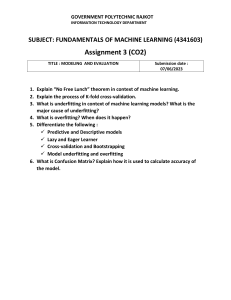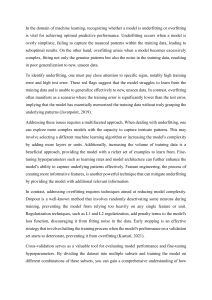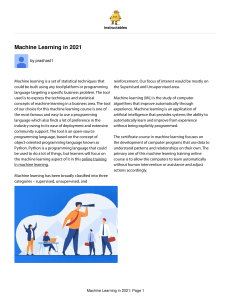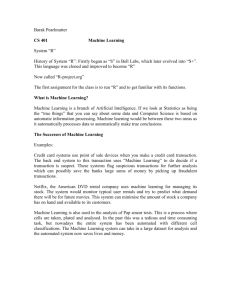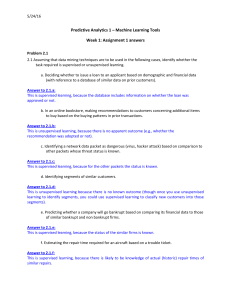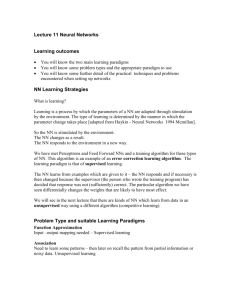Machine Learning Assignment: Supervised, Unsupervised, Overfitting
advertisement
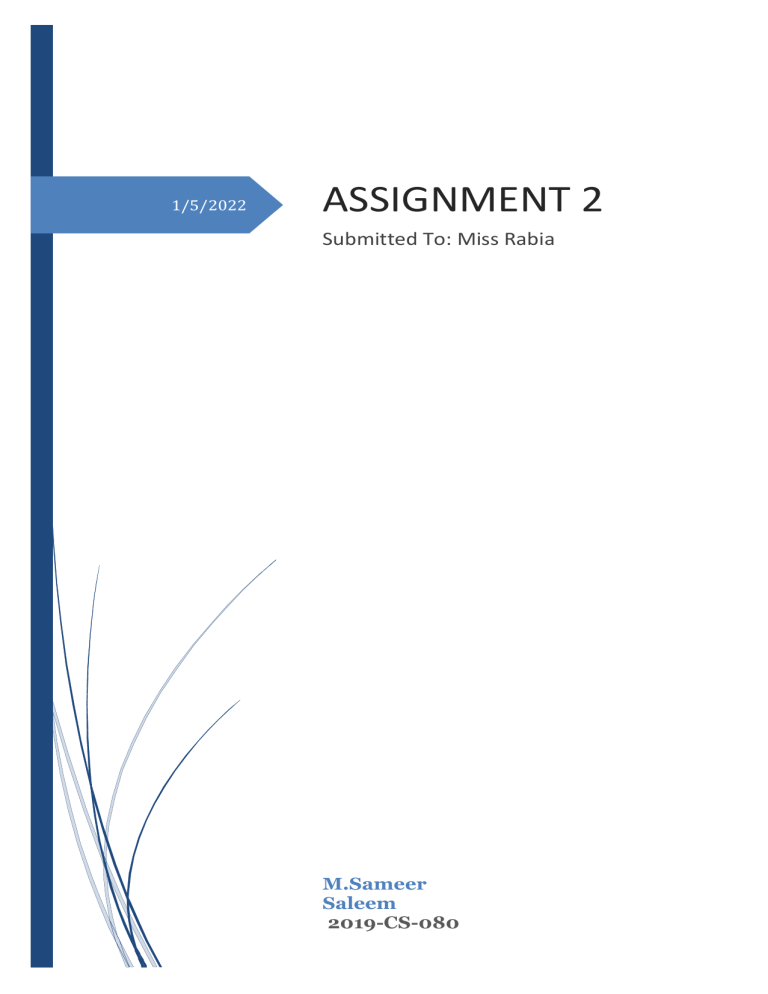
1/5/2022 ASSIGNMENT 2 Submitted To: Miss Rabia M.Sameer Saleem 2019-CS-080 1. Take at least 20 instances of images of your face, label all instances using any labelling tool. Class label should be your name. Attach their screenshots. ANS: Q2. Which type of data is suited for training by supervised learning model and unsupervised learning model? Support your answer by showing pictures. ANS: Supervised learning: In Supervised learning, you train the machine utilizing information which is well "marked." A directed taking in calculation gains from named preparing information, assists you with anticipating results for unexpected information. Kinds of Supervised Machine Learning Techniques Relapse: Relapse procedure predicts a solitary result esteem utilizing preparing information. Model: You can utilize relapse to foresee the house cost from preparing information. The information factors will be territory, size of a house, and so on Order: Order means to bunch the result inside a class. In the event that the calculation attempts to name input into two unmistakable classes, it is called double characterization. Choosing between multiple classes is alluded to as multiclass order. Model: Determining whether or not somebody will be a defaulter of the credit. Qualities: Outputs generally have a probabilistic understanding, and the calculation can be regularized to stay away from overfitting. Shortcomings: Logistic relapse might fail to meet expectations when there are different or nonstraight choice limits. This technique isn't adaptable, so it doesn't catch more mind boggling connections. UnSupervised learning: UnSupervised learning is an AI strategy, where you don't have to manage the model. All things being equal, you want to permit the model to deal with its own to find data. It essentially manages the unlabeled information. Solo learning calculations permit you to perform more perplexing handling assignments contrasted with administered learning. Solo learning issues additionally assembled into grouping and affiliation issues. Grouping Grouping is a significant idea with regards to unaided learning. It essentially manages tracking down a construction or example in an assortment of uncategorized information Bunching calculations will handle your information and find regular clusters(groups) in the event that they exist in the information. You can likewise alter the number of bunches your calculations ought to distinguish. It permits you to change the granularity of these gatherings. Affiliation Affiliation rules permit you to set up relationship among information objects inside huge data sets. This unaided procedure is tied in with finding energizing connections between factors in huge information bases. For instance, individuals that purchase another home probably going to purchase new furnishings. Clustering Clustering is an important concept when it comes to unsupervised learning. It mainly deals with finding a structure or pattern in a collection of uncategorized data. Clustering algorithms will process your data and find natural clusters(groups) if they exist in the data. You can also modify how many clusters your algorithms should identify. It allows you to adjust the granularity of these groups. Association Association rules allow you to establish associations amongst data objects inside large databases. This unsupervised technique is about discovering exciting relationships between variables in large databases. For example, people that buy a new home most likely to buy new furniture. Q3. Discuss the concept of overfitting and under fitting using graphical representation. ANS: Overfitting: Overfitting alludes to a model that models the preparation information excessively well. Overfitting happens when a model learns the detail and commotion in the preparation information to the degree that it contrarily impacts the exhibition of the model on new information. This implies that the clamor or irregular vacillations in the preparation information is gotten and scholarly as ideas by the model. For instance, choice trees are a nonparametric AI calculation that is entirely adaptable and is likely to overfitting preparing information. This issue can be tended to by pruning a tree later it has learned to eliminate a portion of the detail it has gotten. Underfitting: Underfitting refers to a model that can neither model the training data nor generalize to new data. An underfit machine learning model is not a suitable model and will be obvious as it will have poor performance on the training data. Underfitting is often not discussed as it is easy to detect given a good performance metric. The remedy is to move on and try alternate machine learning algorithms. Nevertheless, it does provide a good contrast to the problem of overfitting.
